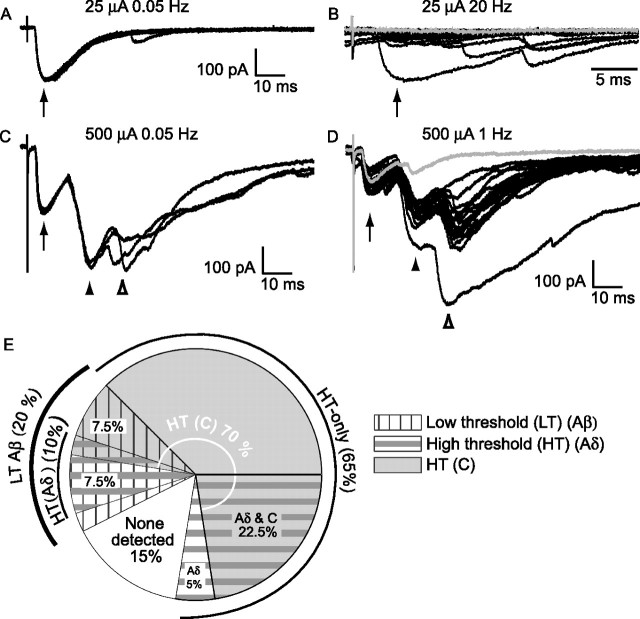Figure 2.
A subclass of EGFP-positive GABAergic neurons had low-threshold (Aβ) fiber input as well as input from high-threshold fibers (Aδ and/or C). Shown here (A–D) are example recordings from the same P35 GABAergic neuron with input from Aβ and C fibers. A, Three consecutive traces show responses to low-frequency Aβ fiber stimulation (0.05 Hz, 25 μA, arrow). B, Twenty consecutive Aβ fiber responses to high-frequency stimulation (20 Hz, arrow, expanded timescale), included failures (gray trace), consistent with a polysynaptic input. These responses are dominated by cation current, given the holding potential and the expected chloride reversal potential. C, C-fiber input was observed when the stimulation intensity was increased (500 μA, at low frequency, arrowheads). D, The C-fiber response had a monosynaptic component with no failures (but note the small amplitude in the gray trace) when tested at high frequency (1 Hz, filled arrowhead). There was also a later, polysynaptic C-fiber component with failures (open arrowhead, illustrated by the gray trace). E, The proportion of GABAergic neurons with input from different afferent fiber classes is summarized. For simplicity, this representation does not distinguish between monosynaptic and polysynaptic responses. There is considerable overlap between the subsets of GABAergic neurons receiving input from each class of afferent fiber type.

